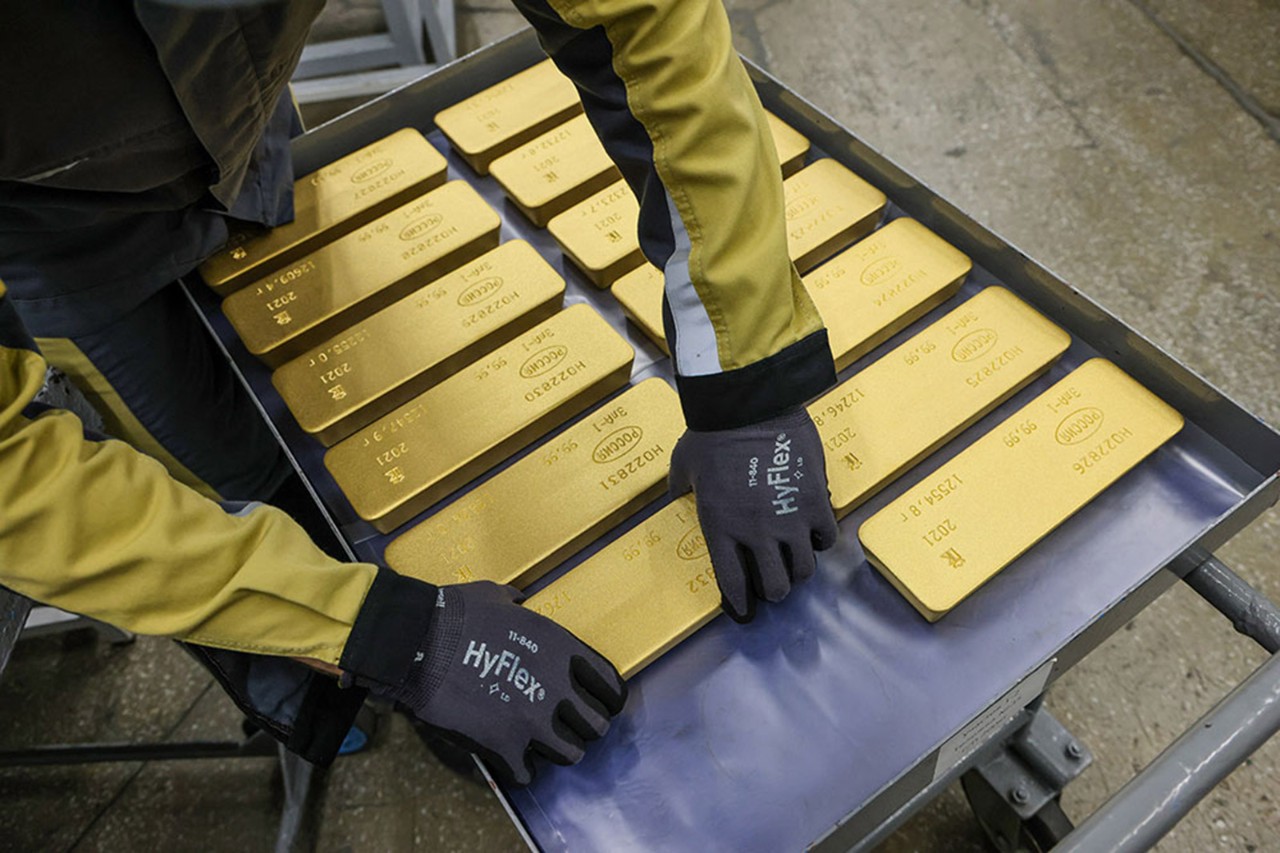
Inflation, be it transitory or prolonged, will be a key factor in determining potential hikes in gold prices over the next 18 months.
Gold was one of the best-performing major assets in 2020, driven by a combination of high risk, low interest rates and positive price momentum, according to the World Gold Council’s 2021 outlook on gold.
The historical role of gold as a store of wealth and a hedge against inflation was heightened in the wake of the Covid-19 pandemic in 2020. Gold prices spiked from US$1,450 an ounce in March to US$2,067 an ounce in August, an all-time high following five months of upward trend.
The role of gold as a hedge against inflation was heightened in 2020
The trends last year demonstrated gold’s dual nature as an investment and a consumer good, says John Reade, World Gold Council’s chief market strategist. ‘Investment demand – and the price of gold – is driven during times of systemic risk when market participants seek high-quality, liquid assets that preserve capital and minimise losses.’
Despite the emergence of newer investment tools such as cryptocurrencies, which share certain characteristics with gold, gold has not lost its market share, Reade adds.
Inflation onset
Gold prices eased back to US$1,900 in the third quarter of 2020 when the world economy began to slow amid increasing concerns about the onset of inflation. When announcements of the imminent rollout of Covid-19 vaccines were made in Q3 of 2020, the market suddenly underwent a huge cyclical rotation, leading to growth in stocks and a recovery position.
In March 2021, gold prices dipped to around US$1,680. The metal was thought to have fallen out of favour on growing expectations of inflation emerging, along with higher US bond yields, says Jeffrey Halley, senior market analyst for Asia Pacific at online trading services company Oanda.
‘This is the first time we are seeing inflation popping up in various data points,’ he says, adding that this is the result of the belief that Covid-19 is responsible for disruption.
Increasing concerns about inflation, beginning in the US and now taken up around the world, will determine whether gold prices will continue on a downward trend or return to upswing, Halley says. Specifically, the outlook for gold is intrinsically tied to the outlook for US interest rates and the US dollar, which circles back to inflation, he adds.
The big question, Halley says, is whether inflation is transitory or ‘sticky’. Short-term blockages in supply chains around the world that saw component and commodity shortages push up prices could lead to transitory inflation. In that scenario, gold may struggle to move higher than US$2,000 an ounce, according to Halley.
Gold’s fate is tied to the many variables surrounding the pandemic
‘But if inflation is finally back meaningfully after 20 years, gold potentially could move up to US$2,500 to US$3,000 in the next 18 months. We just don’t know yet what the attributes of that inflation are. We don’t have enough data yet to say unequivocally that inflation is back,’ he says.
Rhona O’Connell, head of market analysis EMEA and Asia at financial services network StoneX Group, says the market for gold is unlikely to take a huge amount of notice of inflation itself, if that inflation is merely stimulating expenditure and investment in the economy.
Interest rates
‘What it will look at is the level of interest rates. As a caveat to that, when inflation becomes a threat to the economy or to the financial sector because it is high and accelerating, that’s when gold really kicks in,’ she says. ‘The US Federal Reserve and the European Central Bank are saying that the inflation forces we are going to see or are already seeing in the middle of this year will be transitory. That makes sense if they are measuring it year on year.’
The key question is the extent to which a return to economic activity unleashes pent-up demand, O’Connell says.
‘Because we’ve got what looks like an imbalance, will we then find a consumer-driven influence to drive inflation higher? The answer is almost certainly yes, but what the Fed is still saying is that they think it is going to be transitory, although chair Jay Powell has acknowledged that it is higher than might have been expected.’
But a potential increase in interest rates could put a cap on the value of gold, thus rendering it less attractive to investors. That said, the potential demand for gold could be augmented by institutional investors, many of whom have not invested in gold.
The US Federal Reserve’s ability to raise interest rates is incumbent on unwinding quantitative easing (QE), which Halley describes as a ‘tricky job’. The Federal Reserve, he says, has not stopped its monthly buying of bonds and does not feel the need to start tightening monetary policy.
‘That’s the biggest problem for the Federal Reserve,’ Halley says. ‘How do they put the quantitative easing to bed? The world is addicted to zero-percent money.’
Gold’s fate is also intrinsically tied to the many variables surrounding the Covid-19 pandemic, according to Halley. These include whether other strains of the virus will override the vaccines, whether the pandemic will worsen in Asia, whether vaccination programmes in the major economies are on track, and when borders will reopen.
‘International travel may be open for one country but not for another,’ Halley says. ‘It will not be a full recovery until borders start reopening.’
Enduring value
At the same time, the important role of gold in Asian society as a store of wealth is unlikely to change any time soon.
‘From a long-term perspective, as long as US$1,660 holds, gold remains in long-term uptrend,’ Halley says.
China and India have accounted for around 50% to 55% of the physical demand for gold over the past five years, particularly in the jewellery sector. As India grapples with the Covid-19 situation, there has been no activity in the gold market there in recent months, but demand could return when India’s economy and its Covid situation revert to normal. Indeed, there is already some evidence of renewed interest, although it is in the monsoon season,’ O’Connell says.
China unleashed its pent-up demand during the Chinese new-year period at the start of this year, sustaining it due to concerns about inflation and the government’s warning about asset bubbles, according to O’Connell.
‘There is a lot of hedging going on there,’ she says. ‘There is also an expectation that prices will continue to rise even though the yuan is at a three-year high. Demand is still looking pretty healthy in Chinese terms. China in isolation is a pretty robust market at the moment.’
Meanwhile, the South-East Asian market, largely dominated by gold trading, remains dormant, with purchases of gold brought to a halt in countries like Indonesia and Thailand, and the occasional selling back.
‘The Asian mentality is generally favourable toward using gold as an investment,’ O’Connell says. When the price was dipping down below US$1,800 around late April or early May, there was quite a strong demand but there was resale on the approaches to US$1,900. When we dipped below US$1,800 again, there were signs of fresh buying. That’s how Asia stands on the physical side at the moment. It’s got quite a varied complexion,’ O’Connell adds.



